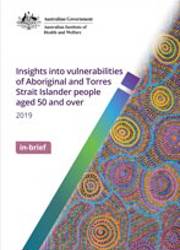Summary
In 2017, the Australian Law Reform Commission (ALRC) completed the report Elder abuse—a national legal response (ALRC 2017). It had 43 recommendations, including developing a national plan to combat elder abuse (recommendations 3 .1–3 .4) and conducting a national study into the prevalence of elder abuse (recommendation 3.5).
The ALRC called for governments to consider the different experiences and needs of older people, including those of Aboriginal and Torres Strait Islander people.
The Australian Government Attorney-General’s Department has commissioned research to improve understanding of the dynamics and drivers of elder abuse, focused on estimating the prevalence of elder abuse in Australia.
In addition to this publication, other research activities include the design of the National Elder Abuse Prevalence Study (led by the Australian Institute of Family Studies), and insights into abuse of older people based on analysis of the Australian Bureau of Statistics data sets (Hill & Katz, 2019).
What is elder abuse?
The World Health Organization defines elder abuse as: a single or repeated act, or lack of appropriate action, occurring within any relationship where there is an expectation of trust which causes harm or distress to an older person (WHO 2014).
Commonly recognised categories of elder abuse include physical, psychological, financial and sexual abuse, as well as neglect (ALRC 2017). Older people can experience one specific type of abuse but can also experience multiple forms concurrently.
Preliminary material: Acknowledgments
Introduction
1. Adding to the evidence base
2. Indigenous Australians aged 50 and over
3. Health and functioning
4. Social and emotional wellbeing
5. Housing circumstances
6. Education, employment and financial security
7. Alcohol and substance use
8. Safety
9. Drawing the data together
End matter: References



